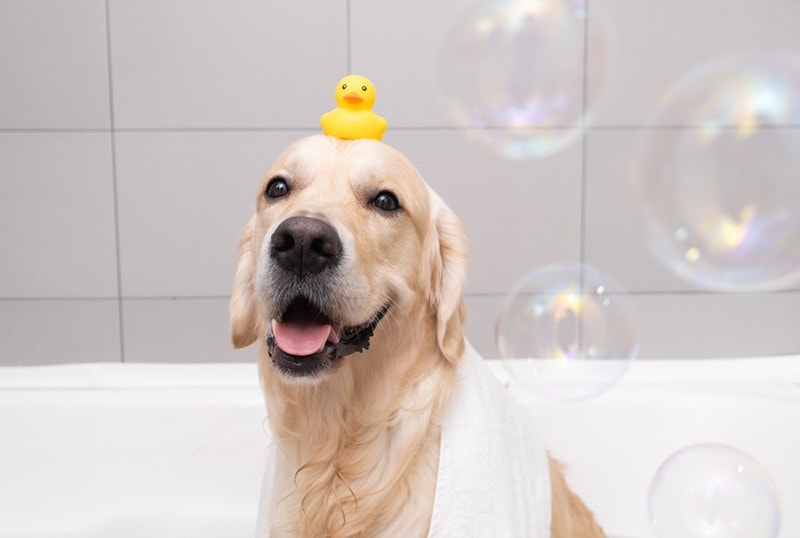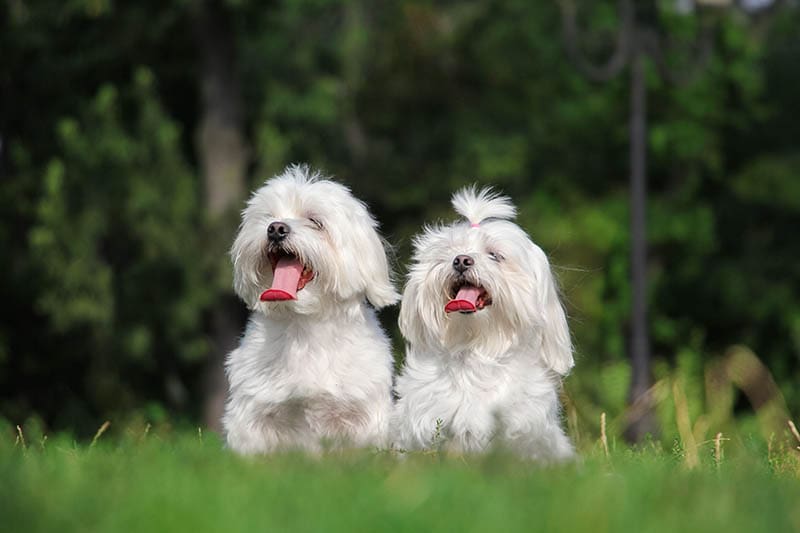How Long Do Rhodesian Ridgebacks Live? Average Lifespan, Data & Care

Updated on
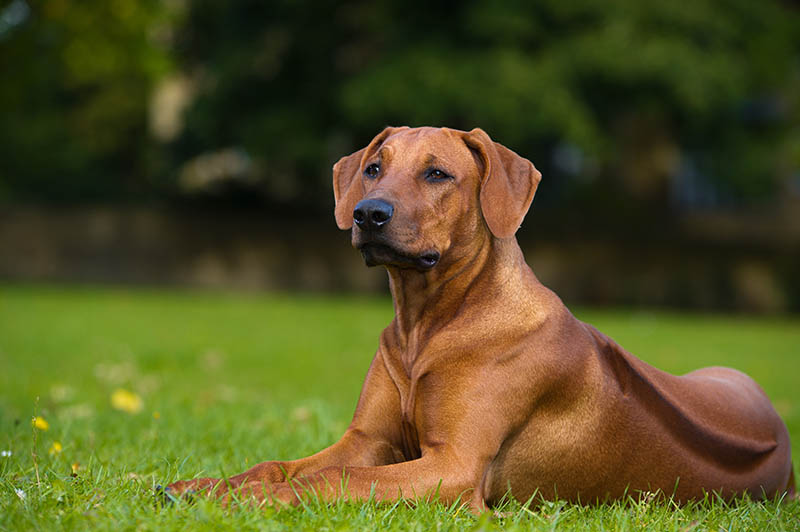
Click to Skip Ahead
When the European explorers first set foot in the southern parts of Africa, they were welcomed by a community of indigenous nomadic pastoralists. This group of people consisted of foragers who heavily relied on dogs to help them sustain their subsistence lifestyle. There was nothing unusual about the practice, save for the fact that the dogs were an unfamiliar breed to the visitors.
Big game hunting was a common practice in Southern Africa during those days, especially around Rhodesia, now known as Zimbabwe. And as the population grew, so did the demand for more food. That’s how the Ridgeback became indispensable to the community, later on adopting the name the Rhodesian Ridgeback. If you are interested in their lifespan, Rhodesian Ridgebacks usually live for 10 – 12 years.
What’s the Average Lifespan of a Rhodesian Ridgeback?
Compared to other breeds, the Rhodesian Ridgeback has an average lifespan. According to experienced dog breeders, a healthy Ridgeback can live to celebrate its 10th or 12th birthday, on condition that it’s well taken care of.
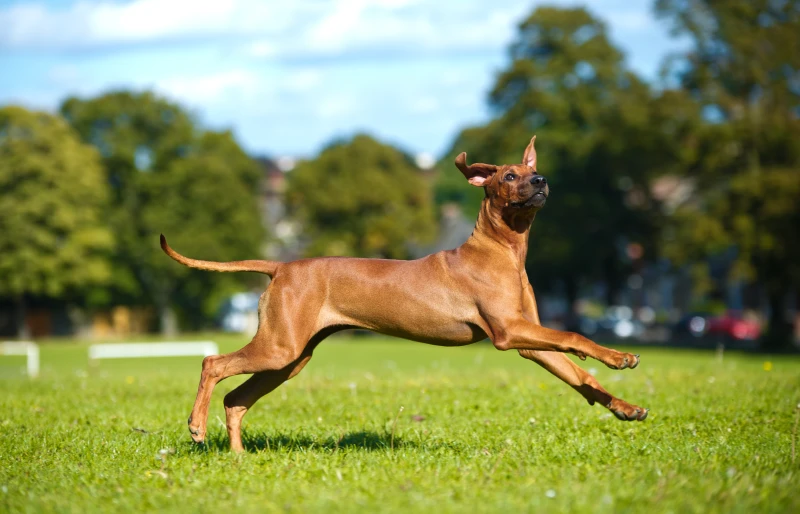
Why Do Some Rhodesian Ridgebacks Live Longer Than Others?
1. Nutrition
Whatever we feed our dogs will determine their overall health status, and ultimately, their longevity.
Just like humans, they love eating meat and plants. Restricting their diet to just meat or just plants is one of the prime reasons why some Rhodesian Ridgebacks have a shorter lifespan. Their bodies aren’t getting all the nutrients that they require to function at optimal levels.
Here are some tips on how to choose high-quality Ridgeback food:
Always go for food that has been inspected and approved by the American Association of Feed Control Officials. Their guidelines are based on years of scientific research meant to ensure every dog gets to be fed food that meets its daily nutritional needs. Seeing as not all dog foods have complied with the AAFCO standards, you have to check and double-check the product label before making the purchase.
The right dog food will provide more than enough protein, minerals, carbohydrates, and vitamins. So remember to check the top ingredients listed, to be sure you’re feeding your dog food that has the right nutrients. Avoid products that have ingredients you’ve never heard of before.
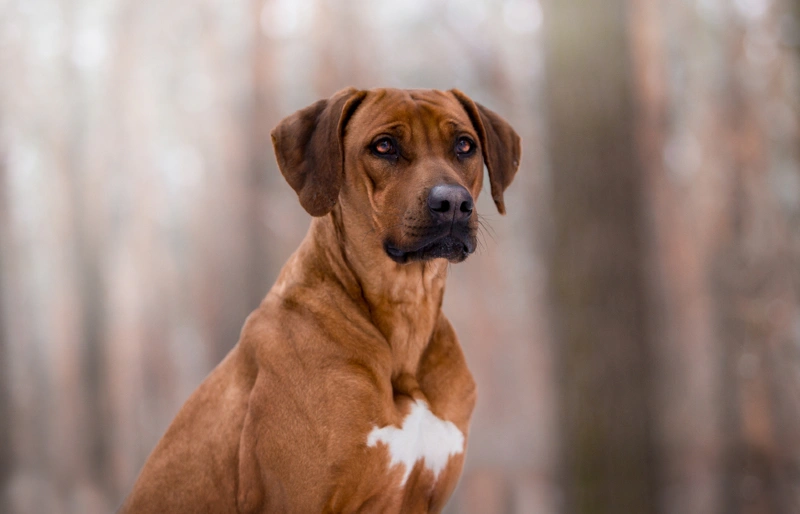
2. Feeding the Right Portions
Once you’ve ascertained that you’re feeding your four-legged friend the right food, moderate the amounts being served. The portions written on the packaging are usually based on mature male breeds that haven’t been neutered or spayed.
Manufacturers prefer using them as the SI unit in this industry because their metabolisms are always higher than their female counterparts and neutered males. A system characterized by a high metabolism will require more calories to function effectively, and those levels of calories are harmful to female and neutered dogs. Determining the right amount of food to serve your dog shouldn’t be an issue, with the help of an experienced veterinarian.
If you keep on overfeeding your dog, it’ll eventually grapple with obesity. And according to some studies, an overweight dog has a life expectancy that’s 2 to 3 years less than the average expectancy.
Every dog breed has an ideal body weight, and that of the Rhodesian Ridgeback is 85 and 70 pounds for the male and female breeds, respectively. They’ll, however, be classified as obese if those weights increase by around 20%.
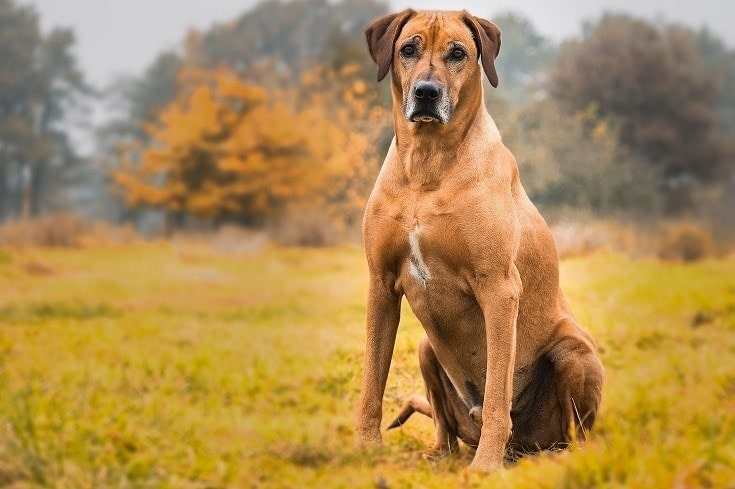
3. Dental Health
Because the skin is an impenetrable barrier, bacteria together with other microorganisms usually take advantage of the teeth and gums.
Circumventing bad breath is not the sole reason why we usually encourage pet owners to seek proper dental care. It’s also important because it’s the most effective method of preventing bacteremia, which usually causes irreparable damage to vital body organs such as the heart, liver, kidney, etc.
Brushing your Rhodesian Ridgeback’s teeth daily is one way of supporting its dental health. But it’s not enough, as they can still calcify in the long run. That calcification process often encourages the growth of bacteria, which eventually leads to dental disease.
If you’d like your dog to live longer than other dogs, you have to take them to a vet every 6 to 12 months for regular dental cleanings.
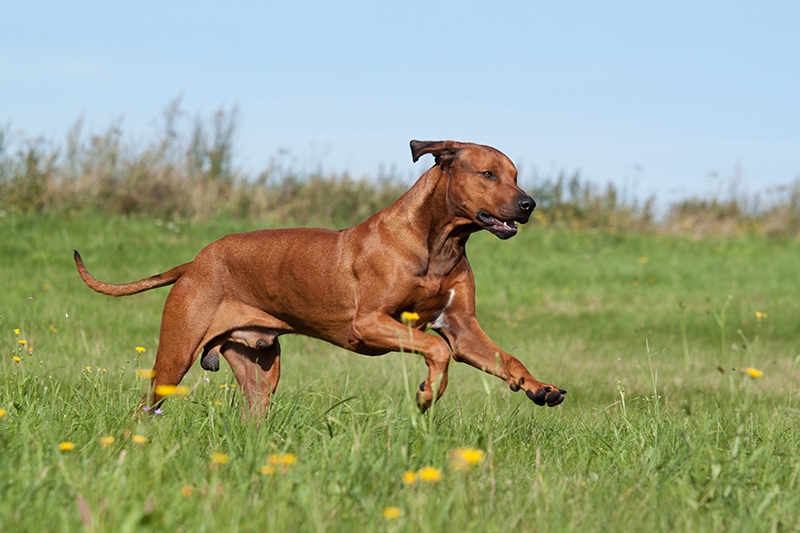
4. Exercise
Rhodesians were bred to hunt. And even though they don’t hunt nowadays, that pent-up energy has to be released one way or another.
Their muscles are also very similar to ours in terms of functionality. They are designed to support their joints to help increase the dog’s mobility. Exercises usually help the joints stay limber, hence becoming less stiff. And as well all know, less stiffness keeps arthritis at bay, as well as other diseases.
The 3 Life Stages of a Rhodesian Ridgeback
The Rhodesian Ridgeback grows in three stages just like any other dog. To understand how they age and mature, let’s look at their behavioral and physical attributes.
Puppy Stage
This is the period between birth until they turn 14 months old. It’s at this stage that you’ll start noticing rapid growth because of muscle development. They’ll exhibit high tolerance to unfamiliar environments because they are still curious and interested to learn.
Adulthood
Once the Ridgeback has transitioned to adulthood, at around 1–2 years old, you’ll not only be able to notice changes in their physical attributes, but the reproductive and emotional signs will be there as well.
First off, they’ll have lost all their baby teeth. Secondly, they won’t eat as much as they used to, since their metabolism will have reduced. Thirdly, their attention span will significantly improve, making it easier for them to understand the commands that they’re being given.
And lastly, they’ll seem to remember every interaction that they had with different strangers and/or other dogs.
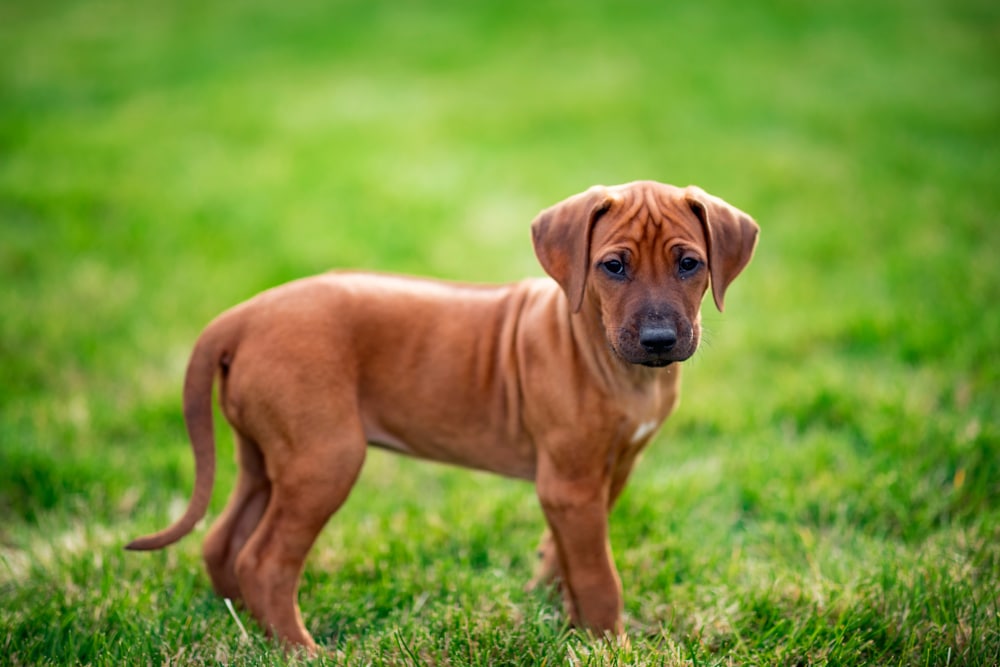
Senior Stage
Ridgebacks reach their senior years at around 8 years old. The first clear sign that your Ridgeback just got to the senior level is their intolerance to the exercises that used to make them happy. They’ll also start losing weight and seem lethargic. Difficulty passing urine and a reduced appetite are the other signs to look out for.
How to Tell Your Rhodesian Ridgeback’s Age
The Ridgeback pup rarely moves around in the first 2 weeks after birth. They’ll spend most of their days sleeping or sucking milk from their parents, until the day their muscle tissues are well-developed and strong enough to support their body weight. They also won’t be able to see or hear anything, up until the third week.
At 12 weeks, their senses and muscle coordination start to improve drastically. At this stage, they’ll weigh 25 to 30 pounds, and chew on just about anything to hasten the process of replacing their baby teeth with a permanent set.
Right around the same period, you’ll notice that they are starting to show some significant growth spurts. Because it’s at this stage that they begin to put on close to 10 pounds every month, for close to a year.
The height of a 3-month-old Rhodesian Ridgeback is 9 to 11 inches. At 6 months, depending on several factors, most of them will be 19 inches high. They’ll keep growing until they get to the 16-to-19-month age range, where a mature male breed has a shoulder height of 24 to 28 inches, while that of the female is 24 to 26 inches. Adult dogs are not as energetic as the pups, but more energetic than their senior counterparts.
If you notice your Ridgeback prefers taking a quiet evening stroll rather than an energetic run, they are living their golden years. All the obvious signs will be there as they approach the ages of 7 and 8.
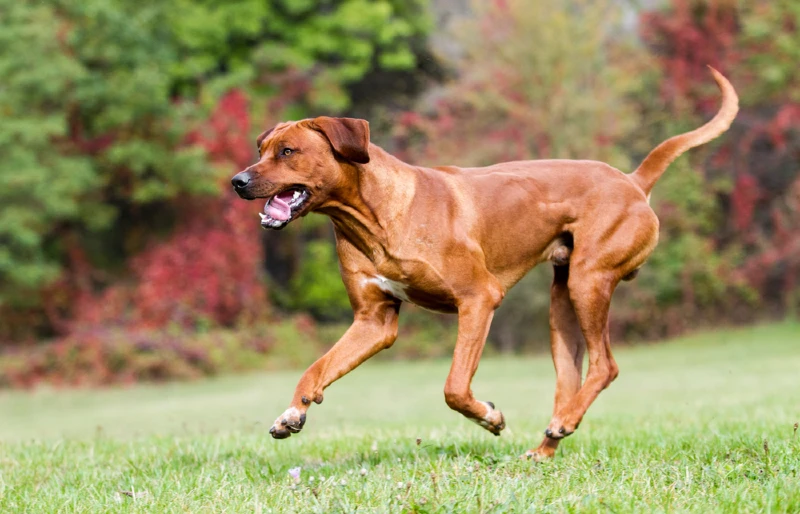
 Conclusion
Conclusion
The Rhodesian Ridgeback is a strong-willed breed, with a very strong prey drive. In fact, they are called the African Lion Hound in some parts of the world, because they were sometimes used for hunting lions. On average, they have a lifespan of 10 to 12 years. Most families love getting them because they are incredibly loyal and highly intelligent.
Featured Image Credit: Tatiana Katsai, Shutterstock




